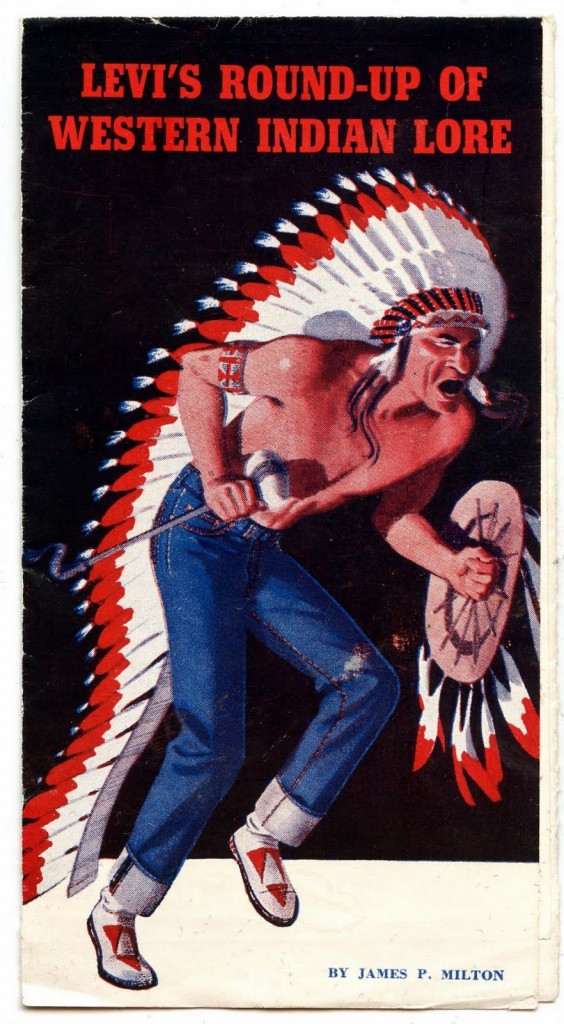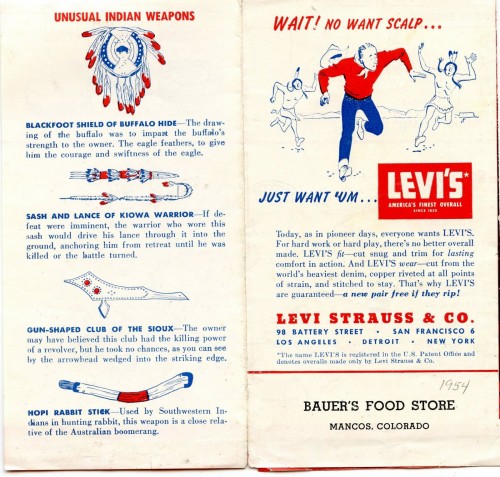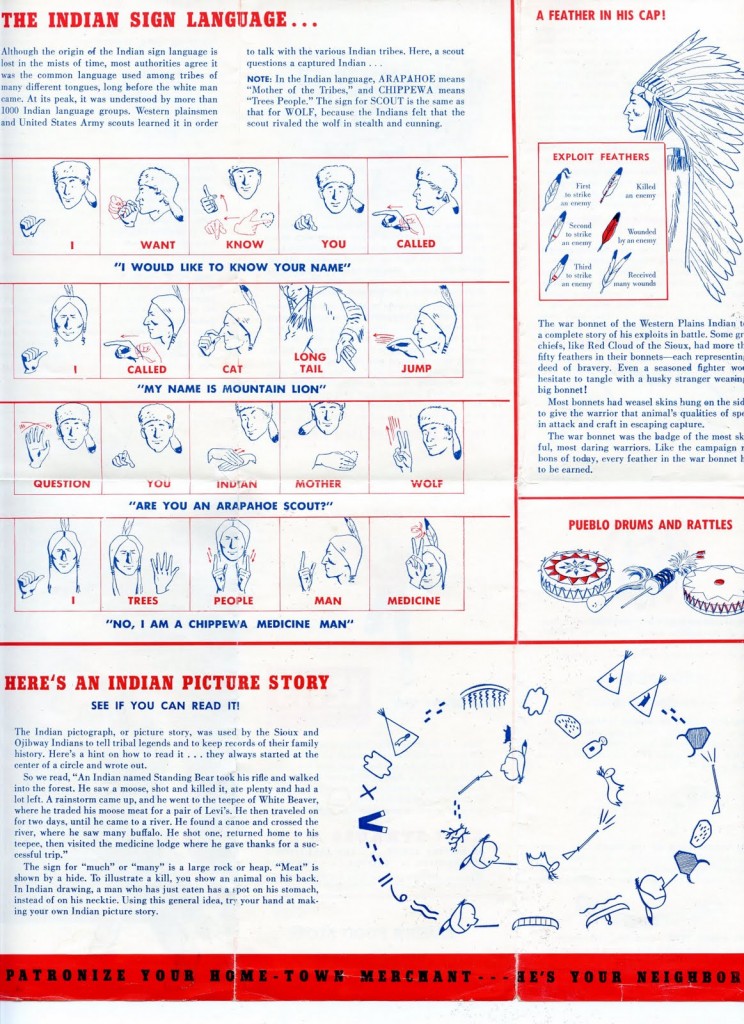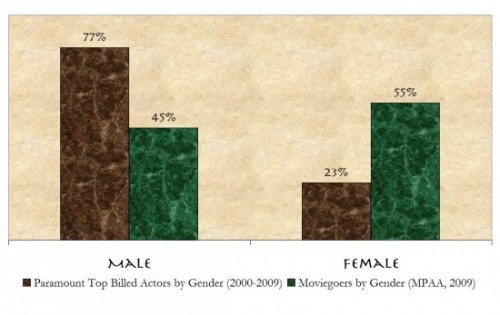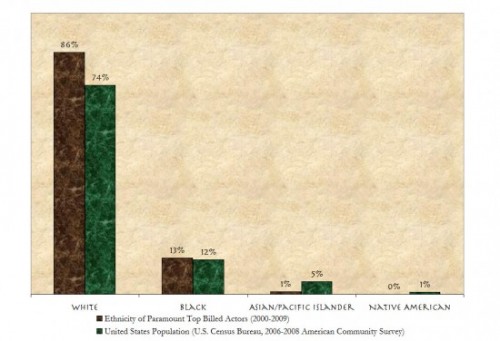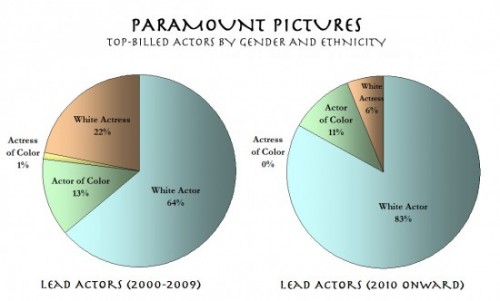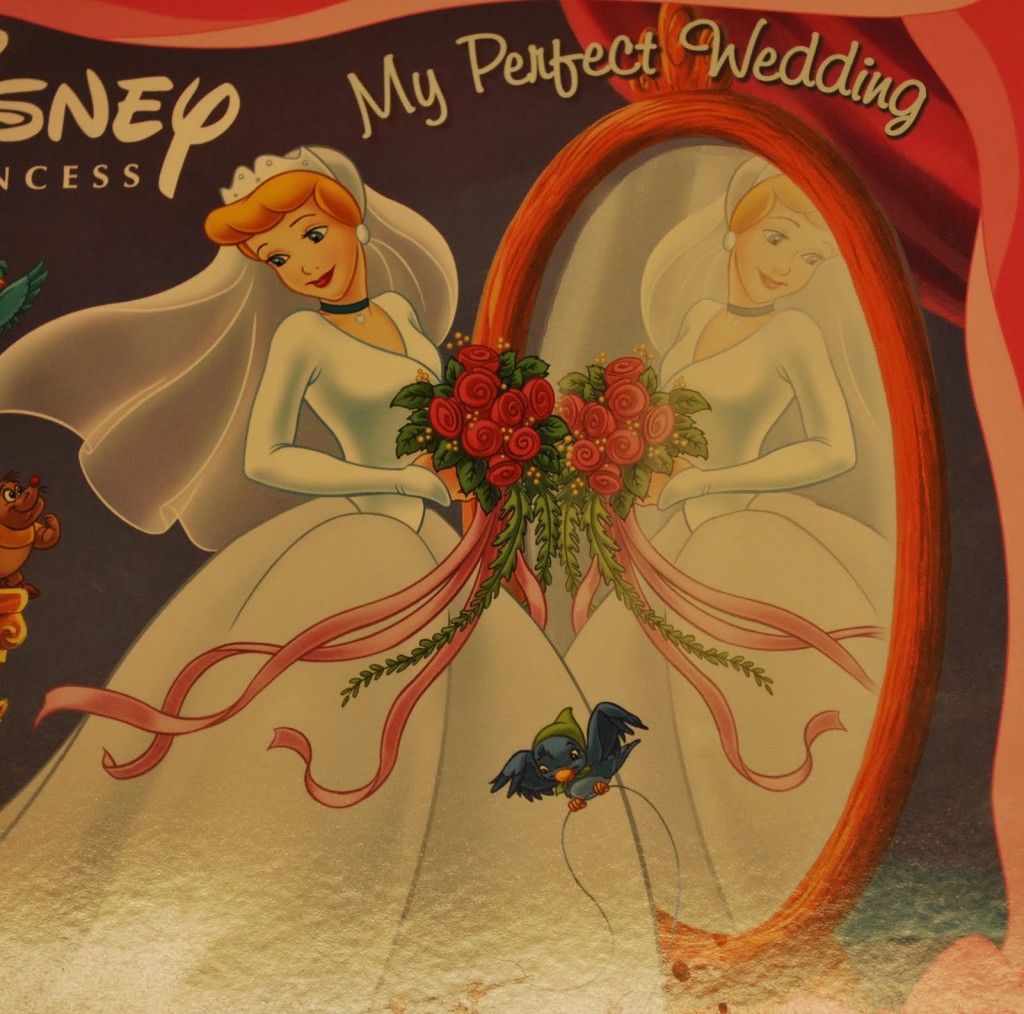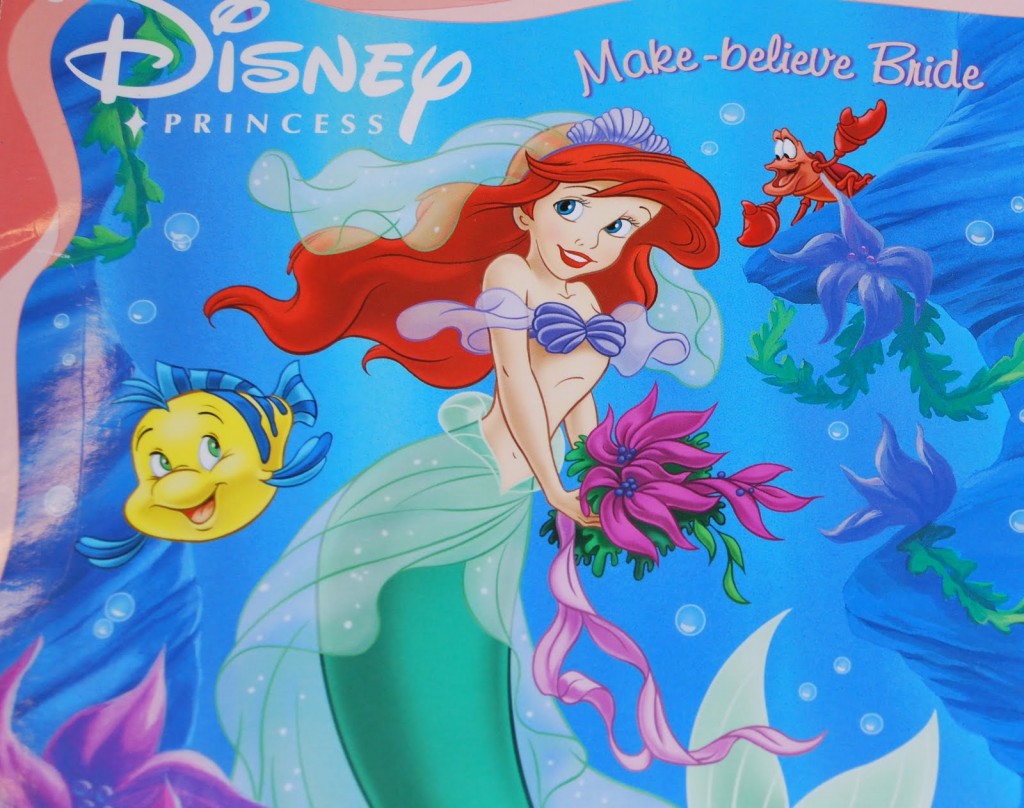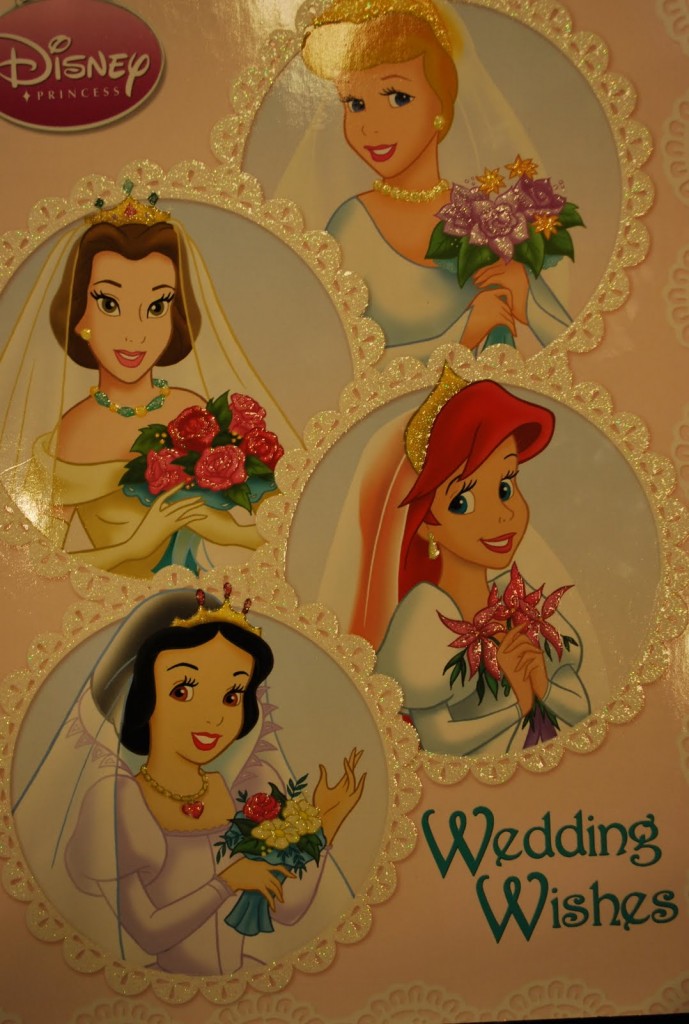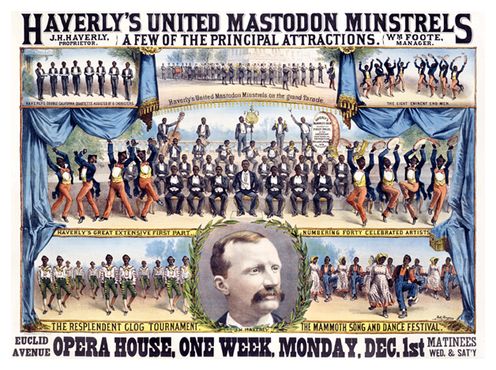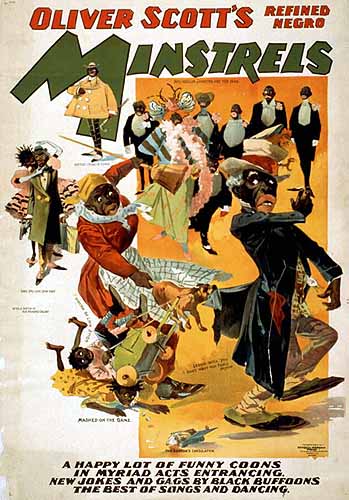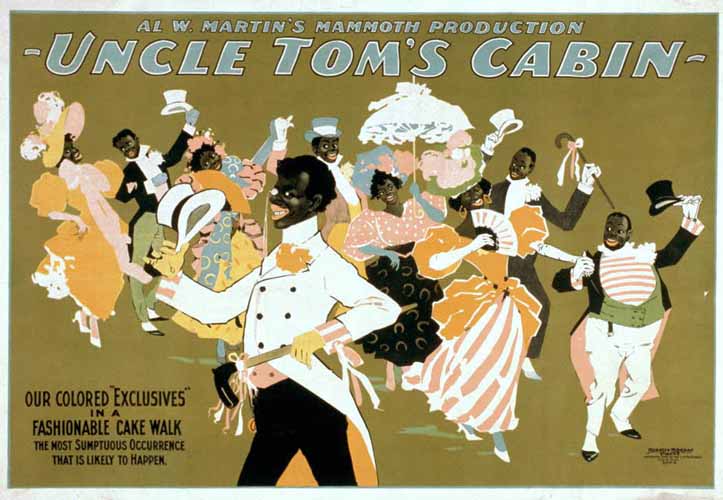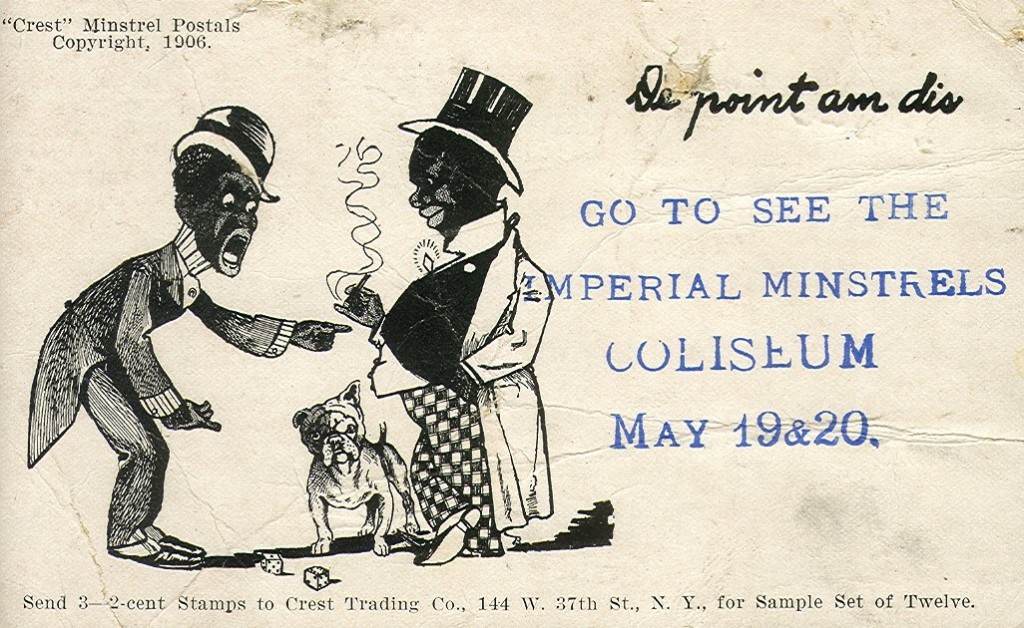Re-posted at Drawing On Indians.
Rob Walker (author of the fascinating book Buying In: What We Buy and Who We Are) sent me a link to a post at Drinkin’ and Dronin’ of a 1954 Levi Strauss brochure about “western Indian lore.” It’s a nice round-up of stereotypes and appropriations of Native Americans. We start off with an angry, bare-chested (and Levis-clad) man with a tomahawk, shield, moccasins, and headdress; I’d guess he’s supposed to be a warrior doing a war dance:
Then some descriptions of items associated with different tribes and the obligatory broken English (“just want ‘um”) familiar to anyone who watched The Lone Ranger and paid attention to Tonto:
I have no idea how accurate their descriptions of “unusual Indian weapons” are, but the overall tone of the brochure doesn’t inspire a lot of confidence.
And we have a lesson on “the Indian sign language,” the origins of which are “lost in the mists of time”:
Related posts: Potowatamis didn’t have a word for “global business center,” “discovering” Newfoundland, appropriation of Native Americans in fashion, teaching kids how to be American Indians, marketing the Vancouver Olympics, ice skaters dress up like Australian aborigines, native cultures in Avatar, Poca-Hotness, Indian costume for your dog, Indian Halloween costumes, Disney depicts Native Americans, “my skin is dark but my heart is white,” American Indians on t-shirts, sports mascots, Playmobil’s American Indian family, Howe Nissan’s American Indian statue, the “crying Indian” anti-litter PSA, Native Americans in Italian anti-immigration posters, and more American Indian dolls.
Also check out Adrienne K.’s blog Native Appropriations for lots of examples.

